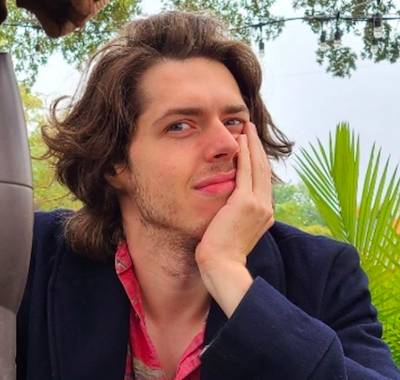Edgar Wright & Screenwriter Michael Bacall on Sending Glen Powell Into a Retro-Futuristic Nightmare in “The Running Man”
The Running Man is both an Edgar Wright film and a faithful adaptation of Stephen King. Long before the director made the cult comedy series Spaced and shot his Cornetto Trilogy, he had the inkling that this story would make for a proper film. The fun and violent hijinks aside, the Arnold Schwarzenegger-led film from ’87 isn’t exactly true to the source material.
For Wright and his co-writer, Michael Bacall (21 Jump Street), it was the right time for a new crack at a story published in 1982 but set in 2025. In the retro future, everyone is overworked and underpaid, including the film’s disgruntled hero, Ben Richards (Glen Powell), who can’t get a job to save his sick daughter.
Ben’s chips aren’t just down, they’re nonexistent, so he puts his life on the line and signs up for the hit reality show The Running Man. The general rule is: run and hide for 30 days, survive the general public and trained killers, and score a billion dollars.
It’s a futuristic spin on today that’s more reality than fantasy. Recently, Wright and Bacall spoke with The Credits about building the world of The Running Man, from the gloss of the reality show to the retro tech to create an adrenaline-jacked thrill ride.
When you two started thinking of the future, how do you envision this sadly believable yet still grotesque future world looking?
Wright: It was an early decision to do a retro-futuristic feeling, because number one, smartphones in films are boring. We decided to keep all the analog technology to give you the feeling that you were almost watching the eighties’ idea of 2025. Rather than having everything as it is now in a digital age, uptown has advanced, and downtown has regressed. The analog technology has not gone away, even if the services are all breaking down. It seemed like a fun thing to tap into – not watching 2025 now, but watching an alternate-reality version.
Bacall: The analog technology also functions on a plot level, with it being a safe technology for the underground to use without being surveilled. Another big question was, how do we create a world where the [network] FreeVee is the center and propaganda?

From the early days of adapting Stephen King, what were the first ideas that stuck and shaped the movie?
Bacall: Well, trying to stick to the basic dramatic structure of the book and let Ben’s emotion come through. Those goals remained the same from our first conversation all the way through post. We both responded to that aspect of Ben hating bullies. Glen may even be the one put in it in those words, but that’s really it. We love that rebellious aspect of him, which gives him his strength, but is also a fatal flaw.
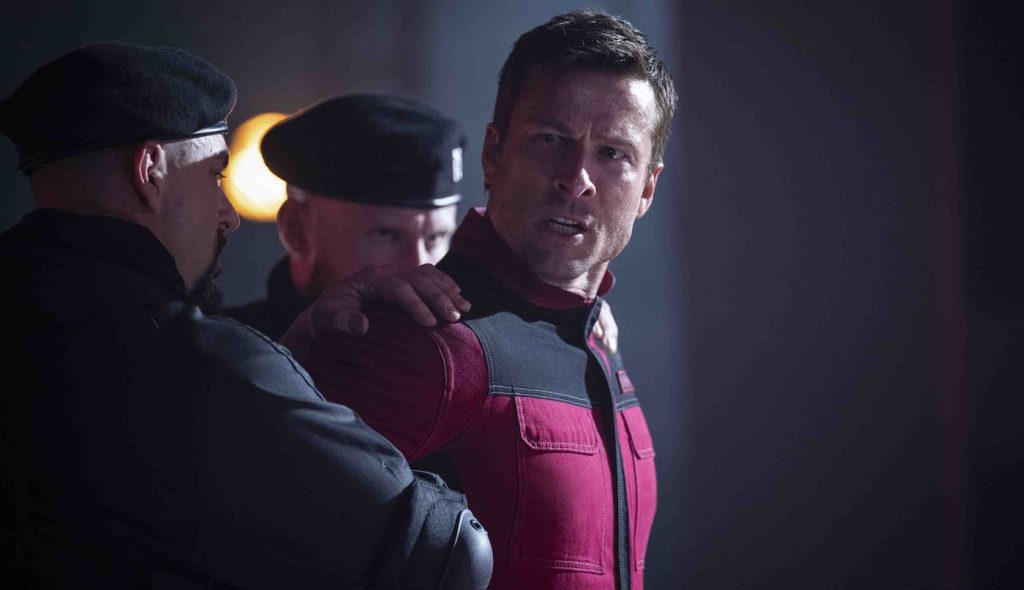
Edgar, how’d you want the camera to tell Ben’s story? How much did his point of view influence your choices?
Wright: You are on the ground with Glenn for most of the movie. If he can’t see around a corner, neither can you. In terms of the look of it, Chung Chung-hoon, who’s an amazing cinematographer who first came to worldwide recognition with Oldboy, brings dark and color at the same time. He’s the master of that. I knew that he’d be able to, especially in all the night scenes, make them have this beautiful color pop in it.
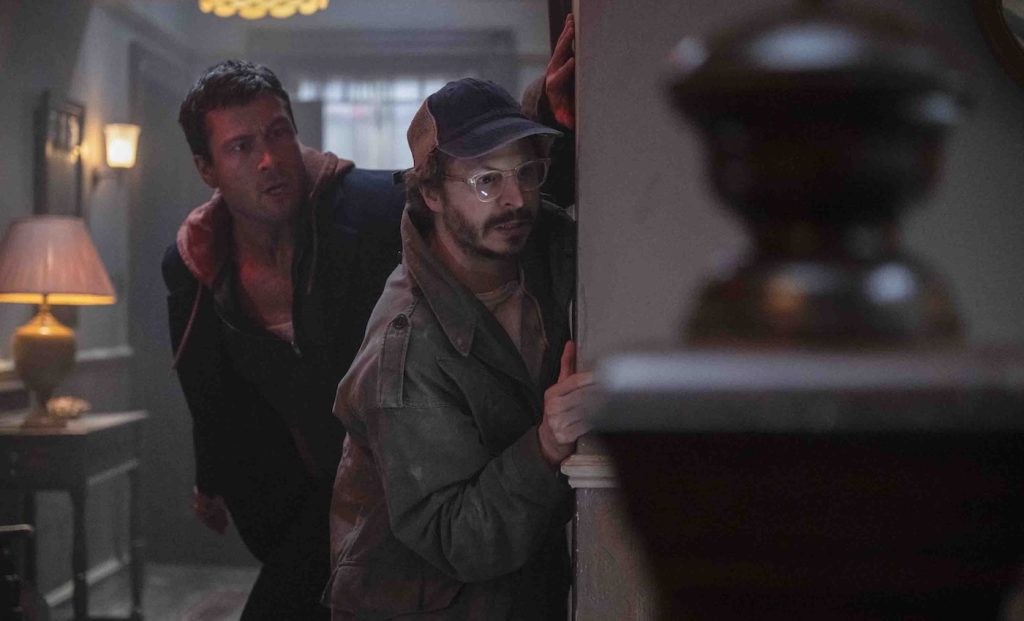
Being an ‘80s version of 2025, how much did ‘80s movies influence The Running Man? In particular, the chase in Walter Hill’s The Warriors.
Wright: It is funny because Walter Hill came to a screening in Los Angeles. Walter has become a friend of mine in recent years. He sent me this funny voicemail where he said, “I love the movie, but you’re really working on my side of the street.” He is not wrong [Laughs]. I love any movie with a quest, a distance to run, and two obvious ones around that time would be The Warriors, and then Escape from New York is the other big one.
When it comes to writing action, what goals are you both looking to hit as storytellers? For example, when The Hunters ambush Richards at the apartment building.
Wright: It’s what Hitchcock does, where you have a big problem and you have small problems at the same time. And so, that’s the fun of working on those bits: you have a big problem — the Hunters are coming to kill you — but then it comes down to little details, like when he’s got the towel on. You know, the fact that he has to take the towel off and be naked to muffle the sound of his fist going through the glass. You’re constantly thinking about those little details that go into a bigger action set piece.
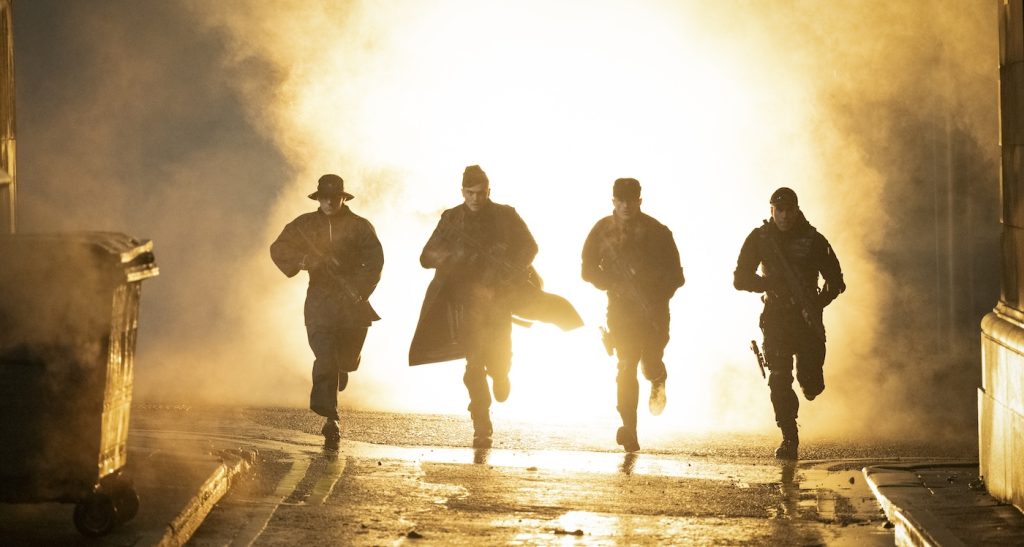
Becall: Reversal. Reversal. Reversal. In line with what Edgar just said about big problems, small problems.
Wright: With this, you have to make the movie on the page as it is on screen, like a page-turner. When Joe Cornish and I were working on Tintin, the Hergé adaptation, it suddenly occurred to me that every page of Tintin: the top-left panel was a plot point, and the bottom-right panel was a cliffhanger. It was a serial, a page a week. All of that stuff feeds into how you place a movie on the page, even before you shoot it, even before you get into the edit.
Edgar, how’d you approach the filming techniques for The Running Man and the other reality shows? Did you want them to have quality filmmaking?
Wright: I have to give credit to the producers of The Kardashians. We actually got in touch with them to ask them about their tech packages and how they do it. I have never shot a reality show before. It’s like, well, how do you shoot this? There’s a fake reality show in there called The Americanos, with a lot of rich people shouting. We tried to shoot that in the way that they would shoot that show.
Michael, where do you begin with world-building? What small details paint a bigger picture?
Bacall: We built out the world with a lot of detail, and that led to long initial drafts that we then cut down before giving them to the studio. But doing that process allowed us to have room to play around in the world. So, small things like Triple Christ Energy Wine being the street liquor.
Wright: I’ll say one thing: the end credits of the film were inspired by the amazing work that Graphics had done when you were in Michael Cera’s headquarters, where he’s making the zine. They had plastered the walls with all of those zine covers and paraphernalia. There was so much amazing work that I said to [production designer] Marcus Rowland on set, “We should scan all of this, because then maybe this could be the end credits.” The end credits are basically the work that the graphics department had done, so credit to them.
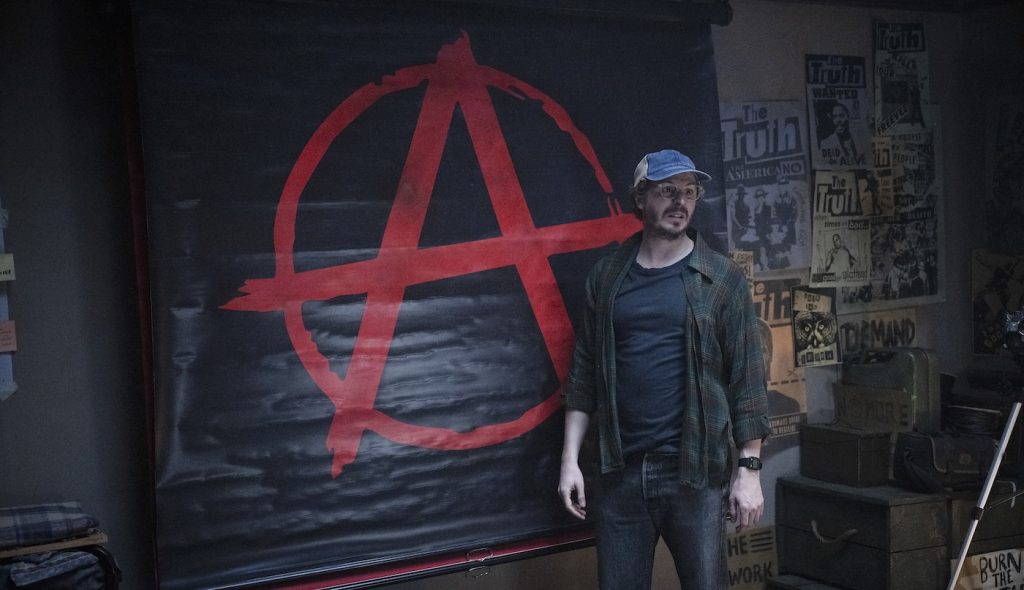
Michael, as you said, action is “reversal, reversal, and reversal.” How’d you want to twist and turn in the Michael Cera-led action sequence?
Bacall: An early discussion was: “Let’s do a rated-R Home Alone–type sequence.” Coming up with the booby traps continually evolved. It’s trying to write in a way that isn’t too complicated and get through the geography of this house while continually escalating.

Wright: It did keep evolving in terms of what the gags were and where they could be and how it could all fit together. An entire set that made sense and really had the secret passages and the fire pole. They all connected together into one piece. It was a lot of work, but I’m thrilled with how it all came together.
Edgar, when you look at the footage for that sequence with your long-time editor, Paul Machliss, what are your instincts for how to best refine action in post?
Wright: We edit on set. Not just because we had a deadline with release, but also when you’re doing action or anything that involves choreography, you want to make sure that it’s working before you get back to the edit. Back in the day of doing Shaun or Hot Fuzz, where we wouldn’t have been doing that, you’d always get back into the Avid and then be screaming at the screen, “No! Why don’t we have that shot?” With this, because there are so many moving parts, you have to edit it as it goes along to make sure it’s basically working.
What’d you learn from the edit while shooting that Home Alone-esque sequence?
Wright: Something we tend to do is you edit the scene for the dialogue, and then you watch it with the sound off and see how the scene feels without anybody talking. There are so many things that come out of that, where you put it together on an instinctual level, so it almost makes sense without anybody speaking. Watch it with the sound off, and then you say, “Oh, that shot’s too long.” “Oh, we don’t want to go to that shot twice.” “What if we stayed on this shot?” It’s amazing what you can gather with no volume.
The Running Man is in theaters now.
Featured image: Director Edgar Wright, left, and Glen Powell on the set of Paramount Pictures’ “THE RUNNING MAN.”


